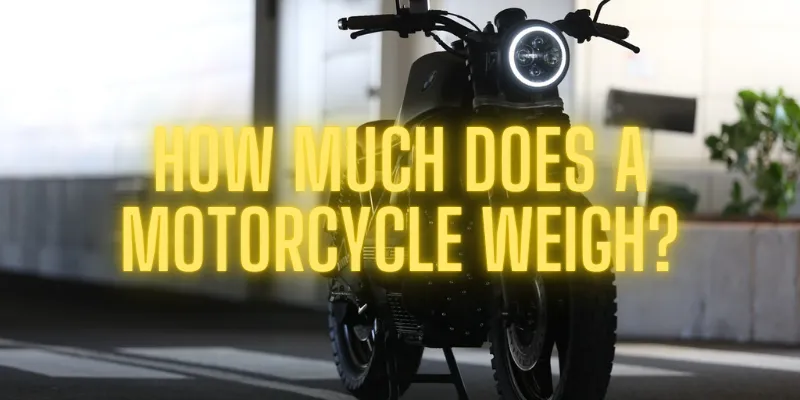Motorcycle weight is an important detail to put into consideration when making a purchase. Buying a motorcycle without being aware of its weight and how much load it can carry may lead to sustaining serious injuries.
To help you out with this question, I’ll be discussing the average weight of motorcycles according to their types, brands and the factors that contribute to it.
In this article, you’ll also get proven tips on how to shed weight on your motorcycle and learn the differences between wet vs dry weight
Average motorcycle weight | Factors affecting motorcycle weight | Weight by motorcycle type | Harley weights | Honda weights | Kawasaki weights | MotoGP weight | How to reduce motorcycle weight | Dry vs wet weight
How much does a motorcycle weigh on average?
Are you wondering how much a motorcycle weighs to help load your trailer or are you just curious?
The average weight of a motorcycle is about 600 pounds or 275 kilograms.
Some motorcycles can weigh more or less than others, depending on type, size and the materials that they are made of.
Below are 20 popular motorbikes and how much they weigh.
| MOTORCYCLE | WEIGHT (Pounds) | WEIGHT (Kilograms) |
| Honda Fury ABS | 681lbs | 308kg |
| Ducati Panigale V4 | 430lbs | 195kg |
| Harley Davidson Roadster | 571lbs | 259kg |
| Harley Davidson CVO Road Glide | 884lbs | 500kg |
| Husqvarna FC 450 | 223lbs | 101kg |
| BMW K 1600 B | 741lbs | 336kg |
| Can-Am Spyder RT Limited | 1,102lbs | 459kg |
| Suzuki Burgman 650 Executive | 606lbs | 275kg |
| Kawasaki KLR 650 | 532lbs | 195kg |
| Yamaha YZF R6 | 419lbs | 190kg |
| Triumph Bonneville T120 | 494lbs | 224kg |
| Suzuki GW250 | 375lbs | 170kg |
| Yamaha SR400 | 348lbs | 158kg |
| Honda XR650L | 346lbs | 157kg |
| Kawasaki Ninja 300 | 383lbs | 174kg |
| Honda CRF 250F | 265lbs | 120kg |
| Kawasaki KX 250 | 237lbs | 108kg |
| Yamaha V Star Raven | 326lbs | 148kg |
| Suzuki GW250 | 375lbs | 171kg |
| Yamaha SMAX | 328lbs | 149kg |
Below, I’ll discuss the various factors that contribute to motorcycle weight.
Related: Motorcycle Tire: Tubed vs Tubeless
Factors affecting motorcycle weight
Motorcycles are made up of many different components. The size and weight of each one of these components determine the overall weight.
Although there are others, the major components that add weight to a modern motorcycle are the engine size, class of bike, body and frame components, and accessories.
Engine
The engine is by far the heaviest part of any motorcycle. Most common engines range from 125cc to 1600cc. For this reason, motorbikes with smaller engines do not weigh as much as those with bigger engines.
Typically, heavier engines are found on adventure bikes, cruisers, and sport bikes while lighter ones are found on scooters, dirt bikes, and beginner motorcycles. Because they are larger in size and use bigger, heavier components, larger engines weigh more.
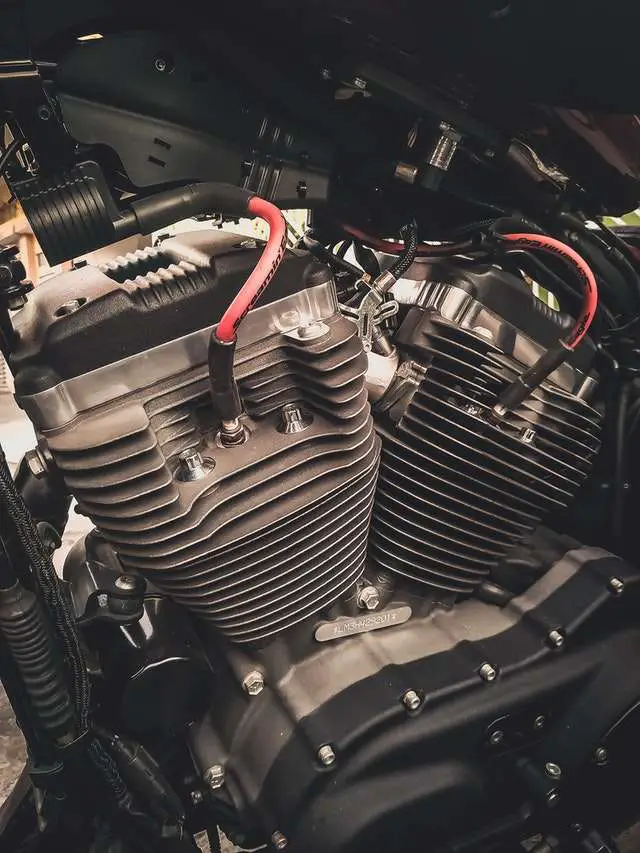
They also require larger frames. So, the larger the engine, the heavier the motorcycle.
The motorcycle’s engine is so important that even within a single class of motorcycle, the size of the engine, or its cubic centimeters (CC) greatly influences the total weight of the bike.
So, if one estimates motorcycle weight just by engine size, this will be the result.
| ENGINE SIZE | ESTIMATED BIKE WEIGHT |
| <200cc | 100 – 200lbs |
| 250-300cc | 250 – 350lbs |
| 500-800cc | 400 – 450lbs |
| 900-1100cc | 400 – 600lbs |
| 1200cc and > | 500 – 800lbs |
Fairings
This is simply a shell placed over the frame of some motorcycles, especially racing motorcycles and sport bikes, with the primary purpose of reducing air drag. The hard plastic (or carbon fibre) shell also defines the appearance of your bike.
You should know that naked motorcycles don’t come with any fairings and tend to be lighter than their fully-faired counterparts. Some of the lightest motorcycles are naked, smaller displacement bikes.
However, most modern motorcycles come with fairings. And although the materials used are lightweight, they can still add significant weight to your motorcycle.
If you’re using an older bike model, they sometimes have sheet metal or steel components which are heavy materials and can greatly increase the overall weight of your motorcycle.
Luggage
Extra loads such as your motorcycle saddlebags and top boxes and other gear can add some additional weight to your bike. Naturally, when you go camping or touring, you’d have to add additional gear and this will contribute to the weight of your bike.
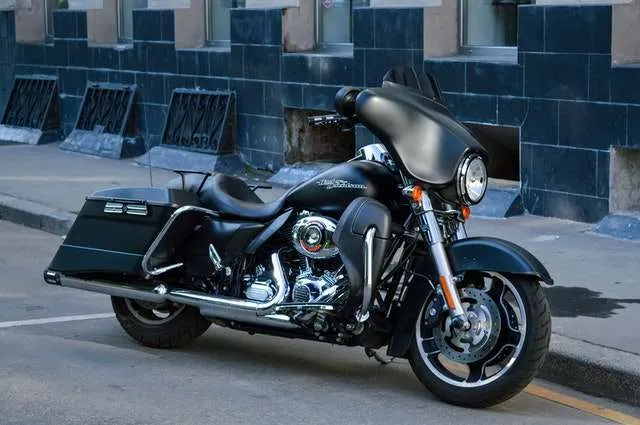
Build Material
The materials used to build a motorcycle greatly contributes to its overall weight. Steel, for instance, is hefty while aluminum and plastic are lighter.
Older bikes tend to be made from steel and are very heavy, while newer motorbikes use lighter materials like aluminum and hard plastic. These materials greatly lower the overall weight of the bikes.
If you use an older motorcycle and need to shed its weight, you’re in luck! There are some great aftermarket upgrades which can be used to replace heavier components of your bike.
Check out our hilarious motorcycle captions
Panniers
Panniers is a style of bike bag that is attached or slung over the back of your rear bike rack. Some motorcycles like touring and adventure bikes come with pannier from stock. Panniers themselves can add quite some weight.
Empty old school panniers made from steel can weigh up to 10 pounds each. This coupled with all the stuff you’d be putting in it, like extra oil or fuel, a chain, and a spare helmet, increase the weight of your bike.
Other factors that affect the weight of a motorcycle are:
- Type/class of bike and its intended use.
- Onboard equipment such as sound system, exhaust system, air suspension, etc.
Weight by motorcycle type
I mentioned earlier that the type/class of bike contributes to how much it weighs. So, depending on what a bike is meant for, weights can vary from one motorcycle to another. Let’s take them one after the other!
- Dirt bikes – dirt bikes are definitely the lightest you’d find amongst other types of motorcycles. To navigate rough terrains such as unsurfaced roads or tracks, they need to be as light as possible. On the average, dirt bikes weigh 100-250 lbs.
- Mopeds – This class of bikes are small and perfect for taking short trips around town. They weigh about 160-180 lbs.
- Scooters – Generally, scooters do the same thing as mopeds and are a cost efficient way of personal transportation. They look a lot like mopeds but are typically heavier. They weigh between 200 to 300 lbs.
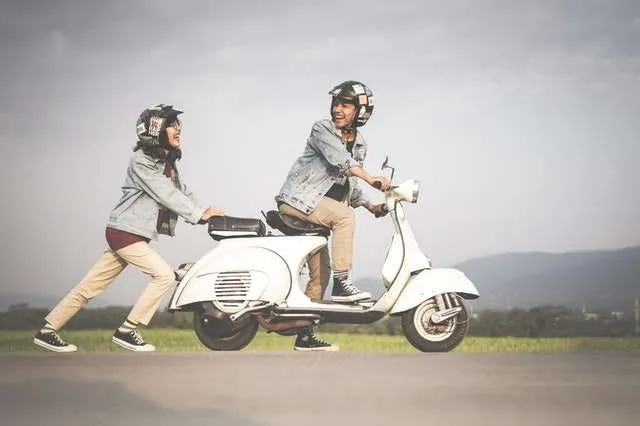
- Sports motorcycles – Sport motorcycles have the perfect weight and performance balance. While they are very fast, they are also more comfortable than dirt bikes and weigh 300-500 lbs.
- Cruisers – A cruiser’s design lets you enjoy comfort during your rides on long, smooth roads. As a result of its shape, the you’ll always ride in a relaxed position. Weighs 400-800 lbs
- Adventure bikes – Although adventure bikes are pretty much just as heavy as cruisers, they’re well known for their sturdiness and reliability. They weigh between 450-650 lbs.
- Choppers – This type of motorcycles are very well known for their distinct shape. Although they aren’t as popular as they used to be, some bike lovers still love them. They weigh between 650 to 750 lbs.
- Baggers – If you tend to have a lot of cargo with you when going for rides, a baggers is the perfect motorcycle for you. This is because the motorcycle is outfitted with compartments for storing accessories and other cargo. Weighs 700-850 lbs.
- Touring Bikes – These are the heaviest motorcycles in the world! They are quite similar to cruisers in their design that ensures comfort for long rides. However, one touring bike can be twice as heavy as a cruiser. Weighs between 800-1000lbs
| CLASS/TYPE OF MOTORBIKE | AVERAGE WEIGHT (KG) | AVERAGE WEIGHT (POUNDS) |
| Dirt Bikes | 100-250lbs | 45-113kg |
| Cruiser | 400-800lbs | 181-362kg |
| Touring Bikes | 800-1000lbs | 362-453kg |
| Cafe Racer | 400-450lbs | 181-204kg |
| Bagger | 700-850lbs | 318-386kg |
| Sport Bike | 300-500lbs | 136-227kg |
| Adventure Bike | 450-650lbs | 204-272kg |
| Scooter | 200-300lbs | 91-136kg |
| Moped | 160-180lbs | 73-82kg |
| Chopper | 650-750lbs | 295-340kg |
Related: Motorcycle Seat: Gel vs Memory Foam
How much does a Harley weigh?
Harleys are one of the most coveted motorcycles on the road! They are produced by the renowned motorcycle manufacturer, Harley-Davidson. Loved for their legacy and top-notch quality. The brand produces some of the heaviest bikes on the market with weight between 500-1000 lbs (226.8 – 453.6 kg). Here are some Harley models and how much they weigh.
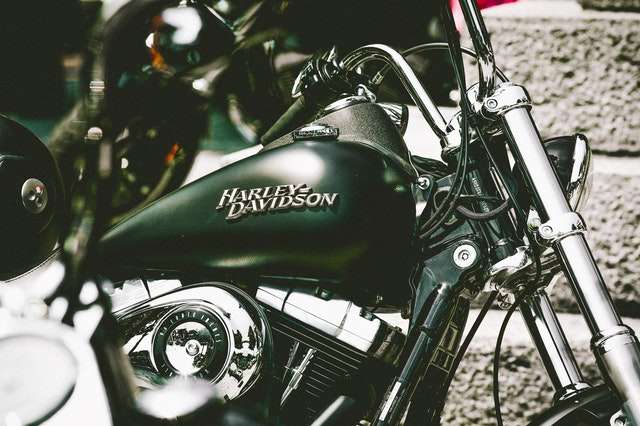
| HARLEY MODEL | MOTORBIKE TYPE/CLASS | WEIGHT (KG) |
| Sportster S | Sport Bike | 221kg |
| Softail Standard | Cruiser | 291kg |
| Road King | Touring Bike | 375kg |
| Road Glide ST | Bagger | 365kg |
| 2022 Street Glide | Touring | 361kg |
How much does a Honda motorbike weigh?
Honda creates magic in the motorcycle industry as it does in the automobile industry. The brand has an array of amazing motorbikes suitable for different needs.

Here’s a few of their motorbikes by weight.
| HONDA MODEL | MOTORBIKE TYPE/CLASS | WEIGHT (KG) |
| Honda Metropolitan | Moped | 81kg |
| Honda CRF250 | Dirt Bike | 102kg |
| Honda PCX | Scooter | 131kg |
| Honda Grom | – | 103kg |
| Honda Gold Wing Tour | Touring Bike | 382kg |
| Honda Gold Wing GL 1800 | Bagger | 348kg |
| Honda CBR250R | Sport bike | 153kg |
How much does a Kawasaki motorbike weigh?
The Japanese heavyweight brand is another outstanding motorcycle manufacturer. Kawasaki is known as a good brand for rookie riders because of their lightweight, easy-to-ride bikes with small displacement engines. Below are some of Kawasaki’s bike models and how much they weigh.
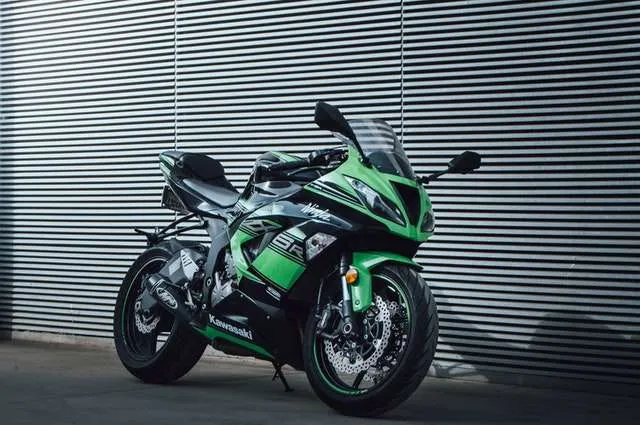
| KAWASAKI MODEL | MOTORBIKE TYPE/CLASS | WEIGHT(KG |
| Kawasaki KX 250 | Dirt Bike | 107kg |
| Kawasaki Concours14 ABS | Touring | 313kg |
| Kawasaki KLX110 | Dirt Bike | 313kg |
| Kawasaki Ninja 400 | Sport Bike | 166kg |
| Kawasaki Z1000 | Super Naked | 221kg |
How much do MotoGP bikes weigh?
MotoGP refers to the foremost level of motorcycle events held on racing circuits around the world. The events are sanctioned by the Fédération Internationale de Motocyclisme (FIM). Interestingly, MotoGP motorcycles are custom-built racing machines that are not available for sale to the general public.
This event is the F1 equivalent for motorcycles and the current Championship is divided into three classes: MotoGP, Moto2, and Moto3. All the three classes use 4stroke engines.
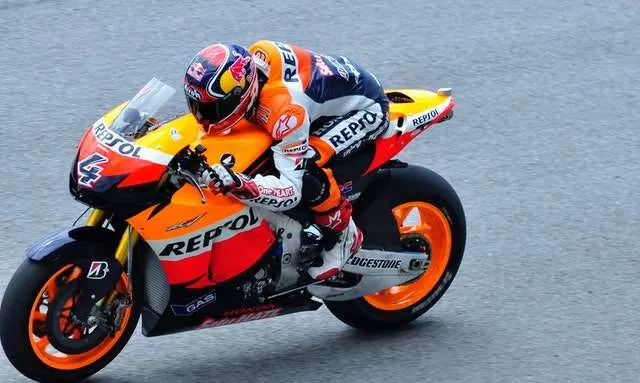
Some top motorcycle manufacturers that take part in the event are Honda, Yamaha, Ducati, MV Agusta, Aprilia, BMW, and Suzuki. Like all sports, there are specifications to meet for a motorcycle to qualify in any of the races. The rule that concerns us today is the bike weight.
According to this Bwin interview with Keith Huewen, 157kg is the minimum weight allowed for a participating motorbike. Any bike that falls short risks certain disqualification from the event.
Moto2 and Moto3 both have combined minimum weights, but MotoGP (up to 800cc and above 800cc) has a different weight criteria. The following are the minimum motorcycle weights permitted for the event:
- MotoGP (up to 800cc) – 150 kg
- MotoGP (from 801 to 1000cc) – 157 kg
- Moto2 motorcycle + rider – 215 kg
- Moto3 motorcycle + rider – 152 kg
Related post: How to get bike grease out of clothes
How to reduce the weight of your motorcycle
You should try these minor modifications to put your motorcycle on a diet and watch it shed all the excess weight *wink*
- Use a Lithium ion battery: A lead-acid motorcycle battery can weigh up to 8 pounds. Switching to a lightweight Lithium ion battery can not only improve starting performance of your bike, but it will significantly reduce its weight as well (by 33 – 66% in some cases).
- Opt for lighter wheels: Wheels are a significant part of the weight of a motorcycle as manufacturers usually use heavy metals to design stronger rims. Consequently, opting for lighter wheels is the one way to shed dead weight. So if you choose to go for lighter wheels instead, the weight of your bike decreases to a great extent.
- Exhaust upgrade: You can get lighter exhausts that are manufactured using quality materials. They are lightweight but durable as well. Doing an upgrade of your exhaust reduces the weight of your bike, gives it a better appearance and better sound.
- Fender modification: Shorten, replace, or remove your front and rear fenders. You can also remove some fairings or replace them with an aftermarket version.
- Remove the tool kit container: Before you set out on your ride, check your bike and take care of minor repairs. This will let you ditch the toolkit which is an added weight to your bike.
Some of these changes may seem minor but they can affect the weight of your motorcycle without interfering with its performance. Shedding your bike weight can enhance the functionality of your bike, letting you enjoy your rides without worrying about excess weight.
Dry Vs Wet Weight
If you check out the specs of your favourite motorbikes on some manufacturers’ websites, you must have seen their wet and dry weights listed. Basically, they have to do with the liquids in the bike.

A dry motorcycle weight refers to the weight of the bike without fuel, oil, coolant, brake fluid, or any other fluids.
On the other hand, wet motorcycle weight is the weight of the bike when it has fuel, coolant, brake fluid, and other necessary fluids in its system.
Generally, these fluids can add up to 45lbs/20kg to the total weight of the motorcycle.
So, when you want to purchase a motorcycle, remember that most manufacturers typically list what’s referred to as the dry/curb weight. This means that the figure given for that bike’s weight doesn’t include gas, fluid or equipment.
Simply put,
- Dry weight = Bike weight without fluid
- Wet weight = Bike weight with fluid
Hence, if your primary interest is touring, cruising, and long-distance riding, you need to factor in the weight of your gear coupled with yours and that of your motorcycle.
I hope that this article has answered all of your questions about motorcycle weight. Thanks for reading.
Cheers!

